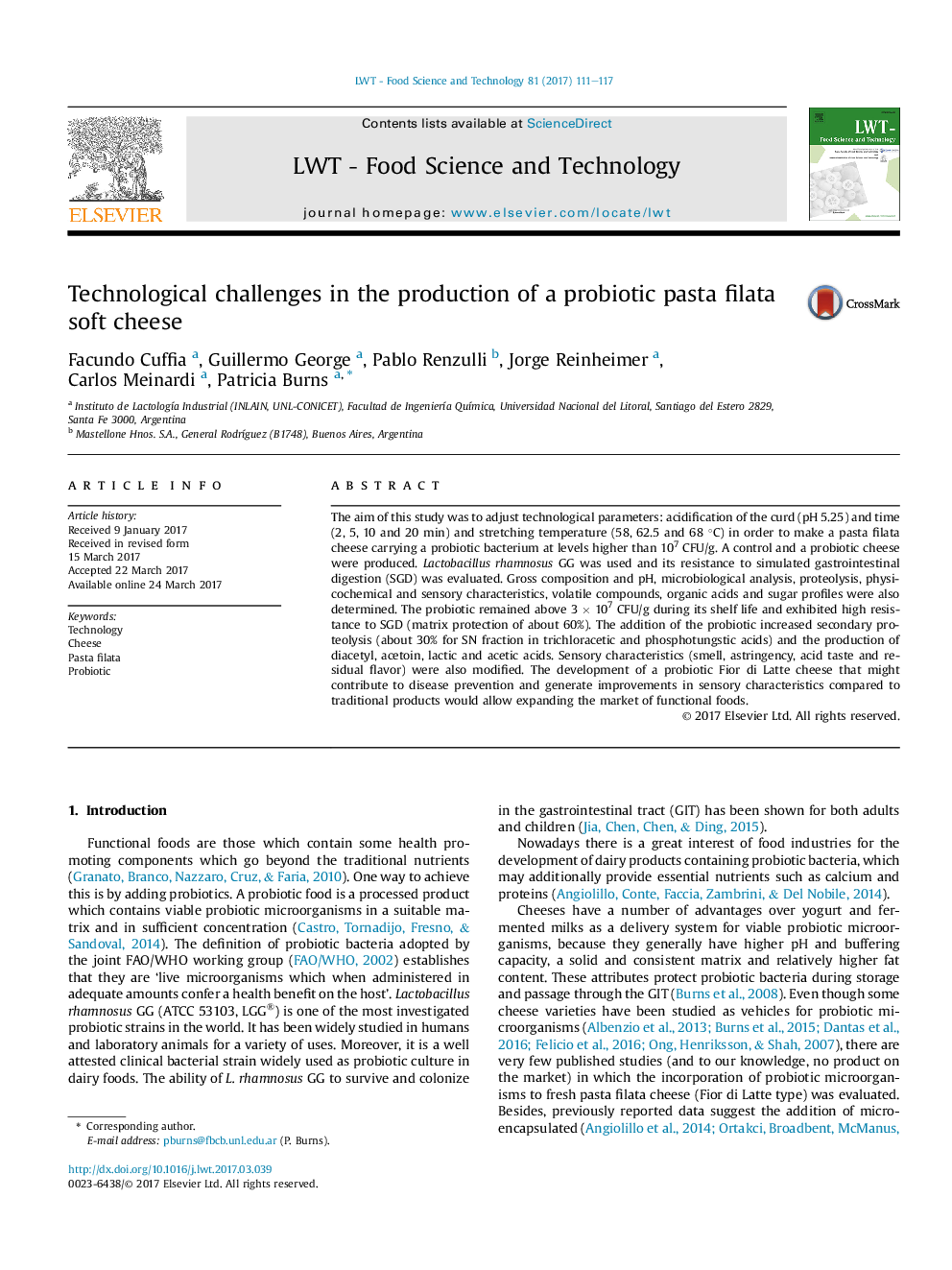| Article ID | Journal | Published Year | Pages | File Type |
|---|---|---|---|---|
| 5768480 | LWT - Food Science and Technology | 2017 | 7 Pages |
â¢Technological parameters were set to make a pasta filata probiotic cheese.â¢The heat resistant L. rhamnosus GG survived at high levels during cheese making.â¢L. rhamnosus GG kept good viability during shelf-life and after GI digestion.â¢Secondary proteolysis was increased in probiotic cheese.â¢Sensory characteristics of cheese were modified by the addition of the probiotic.
The aim of this study was to adjust technological parameters: acidification of the curd (pH 5.25) and time (2, 5, 10 and 20 min) and stretching temperature (58, 62.5 and 68 °C) in order to make a pasta filata cheese carrying a probiotic bacterium at levels higher than 107 CFU/g. A control and a probiotic cheese were produced. Lactobacillus rhamnosus GG was used and its resistance to simulated gastrointestinal digestion (SGD) was evaluated. Gross composition and pH, microbiological analysis, proteolysis, physicochemical and sensory characteristics, volatile compounds, organic acids and sugar profiles were also determined. The probiotic remained above 3 Ã 107 CFU/g during its shelf life and exhibited high resistance to SGD (matrix protection of about 60%). The addition of the probiotic increased secondary proteolysis (about 30% for SN fraction in trichloracetic and phosphotungstic acids) and the production of diacetyl, acetoin, lactic and acetic acids. Sensory characteristics (smell, astringency, acid taste and residual flavor) were also modified. The development of a probiotic Fior di Latte cheese that might contribute to disease prevention and generate improvements in sensory characteristics compared to traditional products would allow expanding the market of functional foods.
